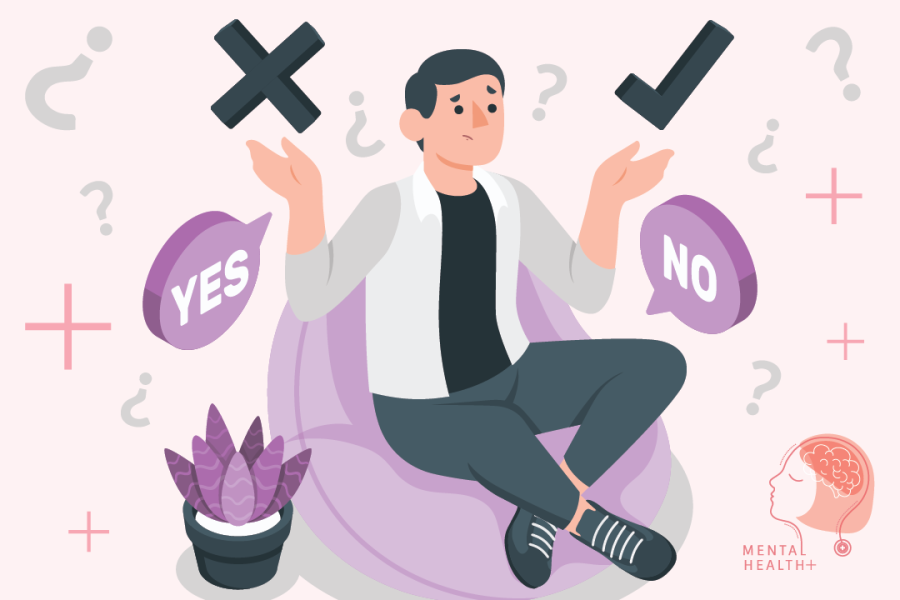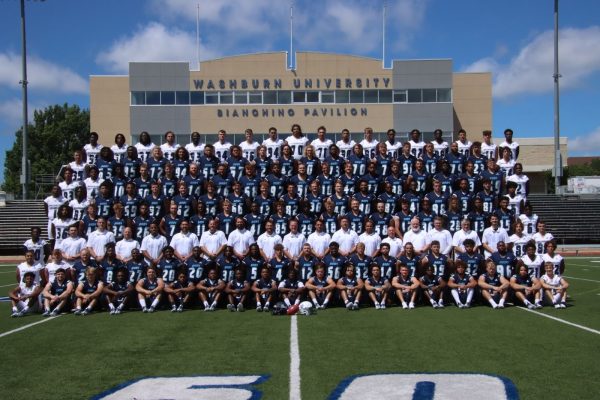Mental Health Talks: Body dysmorphia and gender dysphoria becomes an open conversation
Body dysmorphia and gender dysphoria are very similar states of mind when we talk about mental health. Many students are confused about what it is or don’t know it exists.
Mental health is commonly thought of when considering self-care. That said, while body image concerns do not qualify as mental health conditions on their own, these concerns can lower quality of life, increase psychological stress and encourage unhealthy behaviors, such as eating disorders.
Body dysmorphia, also known as body dysmorphic disorder, is a state of mind in which one person can’t stop perceiving their bodies in a negative light. This negative self-perception heavily focuses on perceived flaws in appearance and can persist even when others cannot identify these flaws from the outside.
“When I look in the mirror, I don’t always see what’s actually there,” said Grace Lindman, senior art major. “It’s being confused about what my body actually looks like compared to what the picture I have of it in my mind is. My eye just goes to the negatives.”
Within the last 10 years, Lindman moved through what she describes as four body stages. The first stage begins at puberty. The second and third stages describe gaining 150 pounds in roughly two years and then losing that weight in a similar amount of time. The fourth and current body stage for Lindman began after reconstruction surgery, which removed seven pounds of loose skin.
“While that’s a long time, it’s not a long time for that much change,” Lindman said. “My mind just couldn’t keep up with the change that my body was going through and it made me really confused.”
While Lindman saw her rapid weight loss as a success with her healthier lifestyle, another stressor began to emerge.
“I became addicted to losing weight and developed anorexia,” Lindman said. “I was so addicted to watching the numbers drop that I stopped eating. It felt like I was accomplishing something. The more I could get off, the more change I could see.”
Lindman uses creativity to illustrate her path to self-acceptance with her own body image. Her senior art show, “Body Over Mind,” acts as a catalyst for healing and focuses on the reality of body dysmorphia.
“My artwork has really helped me heal,” Lindman said. “And I know healing isn’t linear, but I definitely feel like I’ve worked through a lot of those negative thoughts through making these pieces. I feel healthy now, though. I don’t have anorexia anymore and I definitely have a different relationship with food.”
Body dysmorphia can manifest itself in different ways. A similar state of mind is gender dysphoria, a feeling of discomfort that may occur in those who do not identify with the sex assigned at their birth.
“For me, it kind of manifests as a general feeling of discomfort,” said Mary Smith, senior art education major and president of Queers & Allies. “It’s really hard when people don’t see you the way that you see you, when you’re in a body that doesn’t really match what your gender expression is in your head.”
Smith started to recognize feelings of gender dysphoria two years ago during their sophomore year at Washburn. However, Smith’s earliest recollection of gender dysphoria began during their middle school years when they wanted to temporarily be addressed as Murry instead of Mary.
“As I keep going on my journey, I become more frustrated with the way I look and the way that people perceive me,” Smith said. “Gender dysphoria, especially for me, I think comes from my breasts. The amount of times I get called ‘ma’am’ at work makes me want to throw up.”
Struggling with personal body image is challenging by itself, but additional mental stressors can be unintentionally added by concerned friends. Those with body dysmorphia frequently view themselves differently than others do. These conflicting ideals can build up frustration for everyone involved.
“I had people tell me all the time, ‘You’re tiny!’ They would say things, like, ‘Oh, you need to eat a sandwich!,’” Lindman said. “Tiny was a word they would call me and I did not feel tiny. I still felt like I was 290 pounds. It was really tough because that’s what people saw but that’s not how I felt.”
Body image concerns relate to identity issues, like gender dysphoria. Further stressors can be added by family members when acceptance is not at the forefront of conversations.
“When I told my siblings almost two years ago that I wanted to start using gender-neutral pronouns, they outright told me no,” Smith said. “I don’t know if it’s ever gonna get past that.”
For Lindman, it was a combination of her grandmother and a podcast titled “The Art of Asking Everything,” that helped her grow the courage needed to address negative self-perceptions.
“A topic the podcast talks about a lot is the authentic self,” Lindman said. “It really inspired me to look at what my authentic self is, because a part of my body plays into who I am and what I am.”
The International OCD Foundation estimates that about one in every 50 people in the U.S. is affected by body dysmorphic disorder in some capacity. However, it’s possible that body dysmorphia is even more common due to the fact that people are either reluctant to share their perceptions of themselves or that they simply don’t know it exists.
“A lot of people don’t talk about it so they don’t realize that’s what’s going on,” Lindman said. “If I was to talk to someone who felt this, I would come from a place of understanding. I want to hear more about other experiences because body dysmorphia manifests in so many different ways. Even though it’s this thought in your head, it’s very valid because that’s your experience.”
Smith recently came out publicly with their new gender identity and is hopeful, given enough time, that their family will come to understand this transition.
“My mom especially is a pretty accepting person,” Smith said. “I just think she wouldn’t know how to handle it. But I think, one day, we will get to a place where using gender-neutral pronouns is definitely more common.”
Queers & Allies has recently teamed up with the Washburn Student Government Association to provide binders and packing underwear to students on campus.
“I think it’s just really important to have a support group and people to talk to until you can get to a place where you feel safe,” Smith said.
Similar to body dysmorphia, it’s difficult to estimate how many people in the U.S. are affected by gender dysphoria because of a reluctance to share self-expressions with others. Many who associate having gender dysphoria often experience discrimination that results in extra stress. However, because these topics of conversation aren’t common, it’s difficult to navigate how to begin this discussion.
“We definitely work with students who report body dysmorphia or issues with self-esteem or self-image when it comes to their body,” said Molly Steffes-Herman, a Washburn University campus advocate and student counselor. “I know it’s scary, but if you are thinking about reaching out and putting yourself out there, take that first step. Scheduling that first appointment and showing up to it is the hardest part.”
Spreading awareness of these internal battles that students experience helps increase the acceptance and frequency of discussions about body identity dilemmas. Simply knowing that there is a name for what one may be feeling might change that person’s life for the better.
Edited by: Alyssa Storm, Glorianna Noland
Your donation will support the student journalists of Washburn University. Your contribution will allow us to purchase equipment and cover our annual website hosting costs.









